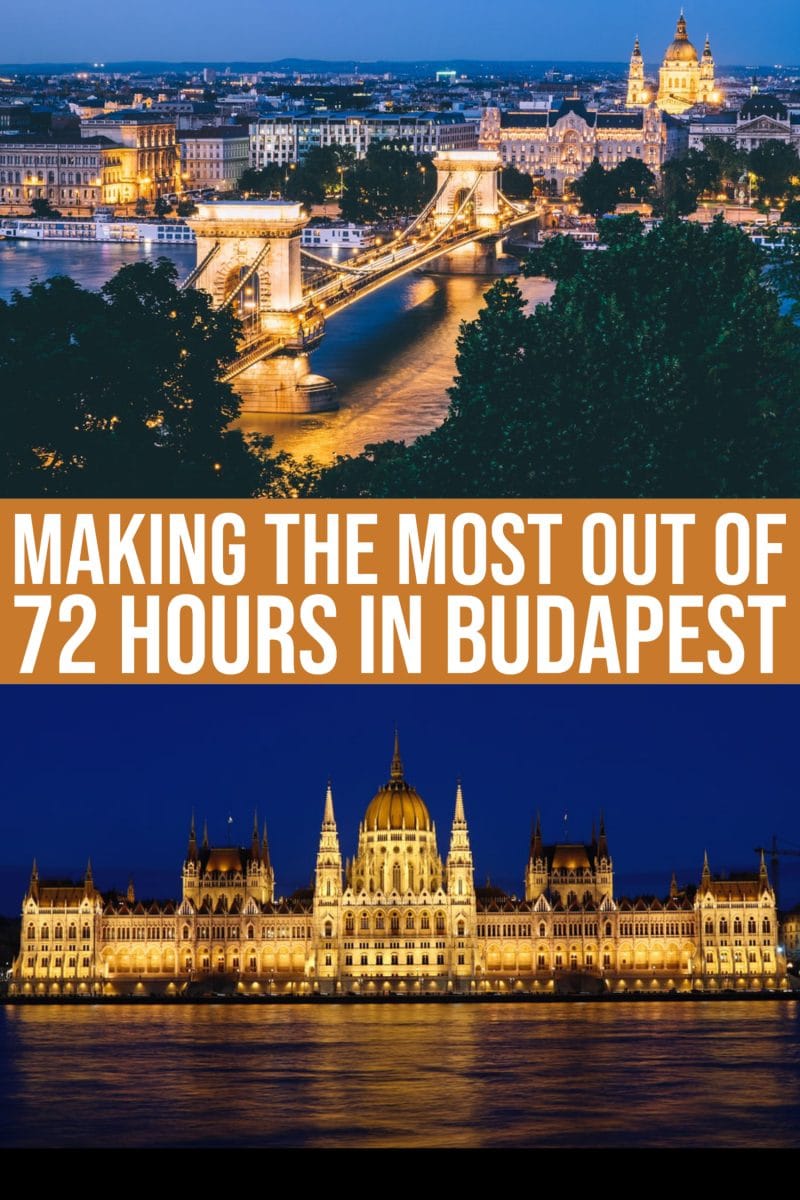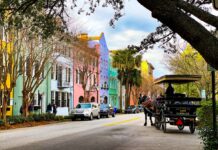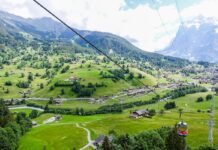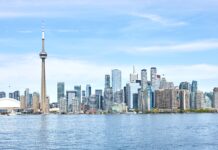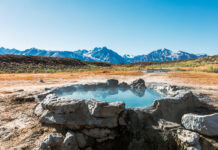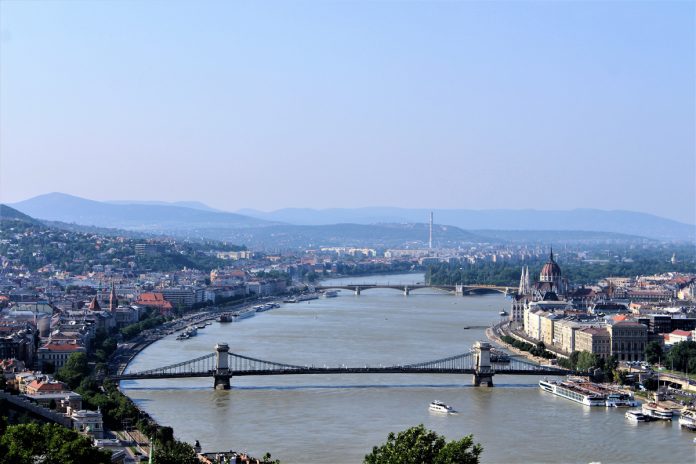No discussion about Budapest can take place without first discussing the difference between Buda and Pest, which were originally two different cities divided by the Danube River. There was actually a third town, Obuda (Old Buda) that also joined to become Budapest in 1873. Why were they joined you may ask? The reason was to create a capital city for the newly formed Austro-Hungarian empire.
Table of Contents
Buda vs. Pest
The next question you may have is what is the difference between Buda and Pest? Let’s start with geography. Buda is on the western bank of the Danube, while Pest is on the eastern bank. Buda is much hillier with dramatic views while Pest has a much flatter topography.
The sweeping views that can be obtained from the hills of Buda have created seclusion that has lent it to more of a luxury vibe. It is in these hills where residents of Budapest go hiking through the woods or enjoy a peaceful picnic with panoramic views. It is also on the Buda side of the river that you can access the caves underneath the city and visit sites like Cave Church, Gellert Baths, and Citadel.

In stark contrast to Buda, Pest is flat as a pancake. It is here where you go for the bustling crowds and electric vibe of Budapest.

Now that you understand the differences between Buda and Pest, here is some information on where to stay and what to do in each part of Budapest during your 72 hours.
Where to Stay In Budapest?
If you like a quieter, more residential vibe, then Buda may be the place to stay. From here you have access to the castle district and the best views of Pest. However, since this itinerary is only for 72 hours, you really need to be in the center of things to make the most of your time. Staying in Pest means that you are close to the action.

District V & Inner City are side by side along the banks of the Danube. It is here where you can really have your finger on the pulse of the city. It is here where the architecture really stands out. You can simply walk and witness the beauty of these buildings with the finest examples of architecture being The Inner-City Parish Church and St. Stephen’s Basilica. You will also be happy in this neighborhood if you like to shop, especially during Christmas when the squares in this are filled with Christmas markets.

Budapest Day 1
After a morning arrival, head straight to your hotel to drop off your bags. Since you are staying in the Inner City or District V neighborhoods, there will be no shortage of things to do in this area. It is recommended to head to Buda on Day 2. Do not overexert yourself on this first day, especially if you are traveling so far that jet lag is a concern.
To give yourself a little pep in your step, head to Vörösmarty square where you can find Café Gerbeaud (7-8 Vörösmarty tér) which was built in 1885 by Emil Gerbeaud. Budapest cafe culture must be experienced, so we recommend you experience it here where you can also gawk at the over-elaborate ceilings and chandeliers.
After your pit stop at the cafe, head to one of Budapest’s most popular sites, the aforementioned St. Stephen’s Basilica. While you will surely appreciate the ornate interior, it is the viewing platform with 360-degree views that will take your breath away.

By the time you leave St. Stephen’s Basilica, it will surely be time to grab some lunch. Luckily, you only have to walk across the street for delicious local food at Belvarosi Lugas Vendeglo (on Bajcsy-Zsilinszky street). There is a three-course menu at a reasonable price. Make sure to try the Túrógombóc, a cottage cheese dumpling.
Give yourself a break after your filling Hungarian dishes and take the metro to Heroes’ Square, the most visited site in Budapest.
Fun Fact: Your ride to Heroes’ Square on the metro line M1 was a tourist attraction in and of itself. Budapest boasts the oldest continuously operating electronic underground railway in continental Europe.

Heroes Square was built to celebrate the Magyar conquest of this area of Hungary. The focal point of the square in the Millenium Monument in the center surrounded by fourteen rulers and statesmen who are considered Hungarian heroes from this time period. The Millenium Monument rises above Heroes’ Square to a height of 118 feet. At the top of the column stands a statue of archangel Gabriel, holding a crown in his right hand. According to legend the archangel appeared to St. Stephen in a dream and offered him the crown of Hungary.
It is Heroes’ Square where many national events are celebrated. You must at least visit this iconic square for a photo, but if you are a lover of art, pay a visit to the Fine Arts Museum and the Mucsarnok Art Gallery which are on two sides of the square.

You took the metro to Heroes’ Square so now is the time to burn off those calories from you recently consumed lunch. Walk along Andrassy Ut/ Avenue, a UNESCO World Heritage site. It is a beautiful walking avenue where you will pass architectural landmarks such as the Hungarian Opera House. Do not pass the House of Terror without a visit. As dark and grim as this museum is, it is important to visit so that people do not make the same mistakes as in the past.
The House of Terror at 60 Andrassy Boulevard is important to understanding what the Hungarian people endured at the hands of the Nazis and then the State Security Authority (known as the AVH) under Soviet Communist rule. Under the building, there was a maze of prison, torture, and execution designed to create fear among the Hungarian people and encourage them to spy on each other to protect themselves from ending up in the torture chambers underground. Today, this building is a museum that serves as a reminder to the horror that the Hungarian people suffered for decades.
After your somber visit to The House of Terror, it is time to reflect as you sip an adult beverage at 360 Bar (Andrássy út 39) and gaze over the rooftops of Pest.

Whenever you finally starting getting hungry again after that filling lunch from earlier in the day, make the two-minute walk over to Menza (Liszt Ferenc tér 2) where you can enjoy some of Hungarian’s traditional dishes in a hip, retro setting with decor that is a nod to the communist past of the country. Goulish, schnitzel, and dumplings are all must try’s, but make sure to save room for dessert as Menza’s offerings will not disappoint.
Don’t stay out too late, you have a full day in Buda tomorrow!
Budapest Day 2
The locals say “Visit Buda, stay in Pest.”. Today is your date to visit Buda, so let’s not waste a minute. After breakfast at or near your hotel, cross the iconic Chain Bridge to enjoy views over the Danube River.

When you get to the other side, take the funicular to the castle district where you can wander cobblestone streets for hours. Visit St. Matthew Church, Citadella Fortress, and Liberty Statue while pounding the cobblestones and make sure you stop at Fisherman’s Bastion for one of the best views of Budapest.

Foodie Tip: While in the castle district, make sure you stop by the oldest bakery in Budapest, Ruszwurm(Szentháromság u. 7), where you can devour some of the best strudel in town.
Most people who visit Buda are content with the view from Fisherman’s Bastion but do not stop here. Make sure to hike to the top of Gellert Hill for breathtaking views of Budapest. About halfway up, you will find Philosophers Park, a truly off the beaten path experience where you can gaze upon a cluster of statutes by Hungarian sculptor Nándor Wagner. When creating these sculptures, Wagner envisioned religious figures meeting in silence around an orb.

For lunch, walk downhill back towards the Chain Bridge and head to cozy Marvelosa Kávézó (Lánchíd u. 13,) which has been family owned and operated since 2011. After lunch, go on your pre-arranged tour of the huge cave system underneath the Buda side of Budapest that is thought to be more than 100 kilometers long.

After your time in Buda, you’ll need to freshen up for your night on the town in Pest so head back to your hotel to get ready. You’ll be spending your evening in the ruin bars of Budapest, but you need to grab a quick bite to eat first. Try the street food Mecca of Karavan (Kazinczy utca 18.) where you and those you are traveling can all try what you want from one of the many food trucks. Eating here means you are exactly where you need to be for the rest of your evening.

The Pest ruin bars started in the early 2000’s in what was once the Jewish Ghetto. The buildings had been abandoned since the deportation of thousands of Jews during World War II. The first ruin bar was Szimpla, but the movement really started to gain traction when that bar moved into a larger space of a condemned building complex on Kazinczy street. More ruin bars started popping up in the area and soon the ruin bars became a staple to the Budapest tourist scene. A night out here is a must during a trip to this Eastern European capital city.

Budapest Day 3
Let’s be honest, you’ll probably sleep in or at least not feel like moving quickly this morning after your previous busy day and late night. Head over to the Central Market Hall (Vámház krt. 1-3) for an early lunch before it gets crowded later in the day. Not only can you eat here, but it is also a great place to people watch. Make sure to have your camera handy because there are many opportunities for shots of not only fresh foods but also the architecture of this historic market built-in 1897.

If you feel like walking, how about a stroll along the opposite side of the Danube than your walk yesterday. From the Central Market Hall, you can walk north along the Danube to the Hungarian Parliament Building, an impressive building with a domed neo-Gothic structure that was inspired by the British House of Parliament. Its position along the banks of the Danube is a sight to behold, but if you want to see the inside, make sure to book your tour ahead of time.
The rest of the afternoon you will spend at Gellert Thermal Baths (Kelenhegyi út 4) for the ultimate Hungarian experience. Why is Budapest known as the city of baths? Because it sits on a fault line which has created 120 hot springs in the area that feed all of the baths in the city. There are many baths to choose from in Budapest, but Gellert wins for beauty. The Gellert Baths opened in 1918 in Art Nouveau style and feature indoor and outdoor baths fed by thermal springs from the nearby Gellért Hill.

Do not forget to pack your swimsuit and flip-flops for the baths!
Tonight is your last night in Budapest, so you must celebrate it accordingly. If you ever wanted to eat a Michelin star restaurant, now is your chance. Borkonyha WineKitchen (Sas utca 3) is a reasonably priced Michelin star restaurant with an extensive wine list. Try the 5-course tasting menu so you can enjoy a little bit of everything.
Make sure to make a reservation ahead of time, perhaps before you leave for Budapest.
Another idea for tonight is a cruise along the Danube. If you can stomach a later dining time, consider a wine tasting or cocktail cruise along the Danube from 7-9 PM followed by a later seating at Borkonyha WineKitchen. You could always go earlier in the day, but a cruise along the Danube at night is something truly spectacular.

Bonus Day In Budapest
As you can see, there is a lot to do and see in Budapest. You will be busy the whole time, so consider adding a fourth day to spread all of these activities out. On your bonus day, you could add in the Gyermekvasút, translated to English is Children’s Railway, which is literally a railway operated by children. Do not worry, grown-ups do the actual driving and engineering. However, children do everything else including selling and controlling the tickets, dispatching the trains, making announcements and even changing the switches.

This history of this railway is rooted in Budapest’s communist past. Children who performed well in school were rewarded with Pioneer Youth Camp which was accessed via the Pioneer Railway. It was meant to show youth the benefits of manual labor and make them appreciate it. Children operated the railway then and to this day, it is still operated by children. The difference now is that it serves as an elective for students in school.
The line stretches among the Buda hills from Széchenyihegy to Hűvösvölgy, crossing the Cogwheel Railway. It also serves Normafa and the highest point of Budapest, Jánoshegy. Many attractions are within walking distance of the Children’s Railway. This unique and scenic experience is a wonderful option for those with some extra time on their hands in Budapest.
No trip to Eastern Europe is complete without a trip to both Budapest and Prague. The most difficult part about this trip is deciding which city you like best as they are both adored by tourists who like to argue which is better! Go ahead and start planning your trip so you can decide for yourself.
WANT TO READ MORE?
Check out “Prague: An Adventure in Walking” to help build you Eastern European adventure!
ENJOYED THIS? CONNECT WITH US ON SOCIAL MEDIA
• Newsletter: Every Avenue Travel delivered to you
• Facebook: @EveryAvenueTravel
• Instagram: @TravelEveryAvenue
💖WANT TO TRAVEL MORE?💖
Subscribe to receive trip ideas and inspiration right into your inbox once a week!
📌PIN THIS FOR FUTURE REFERENCE📌
